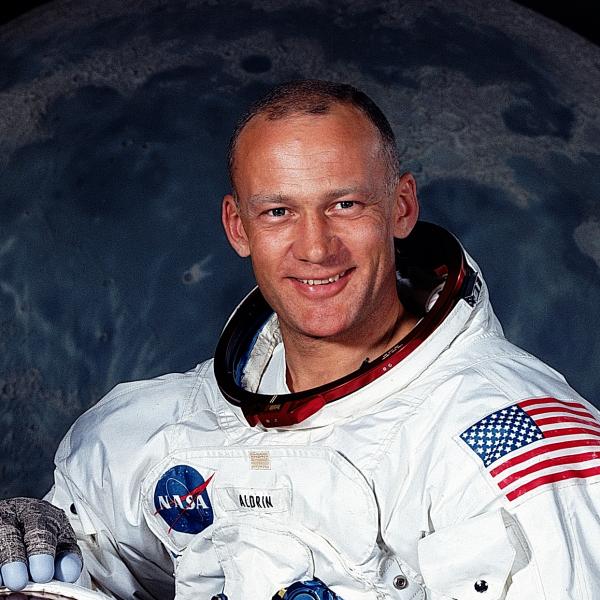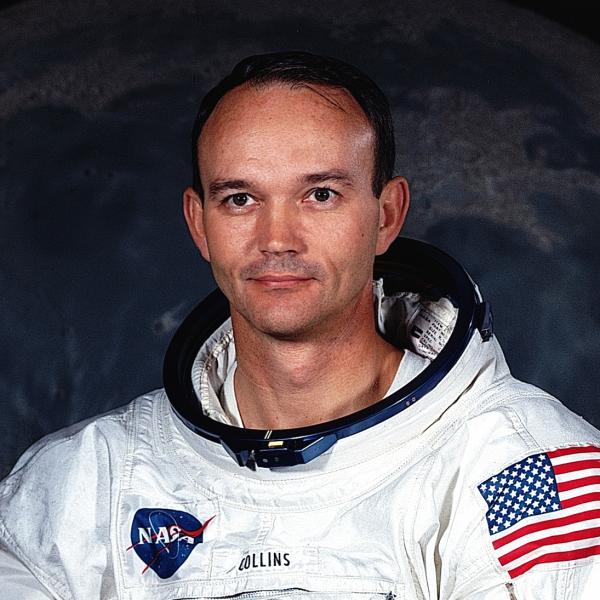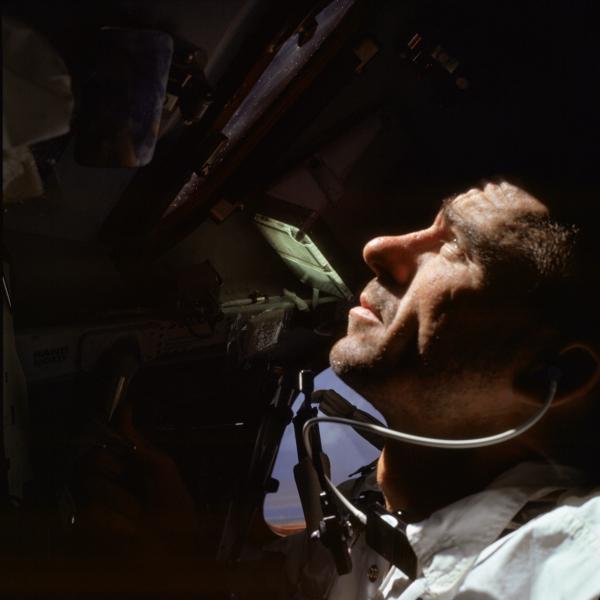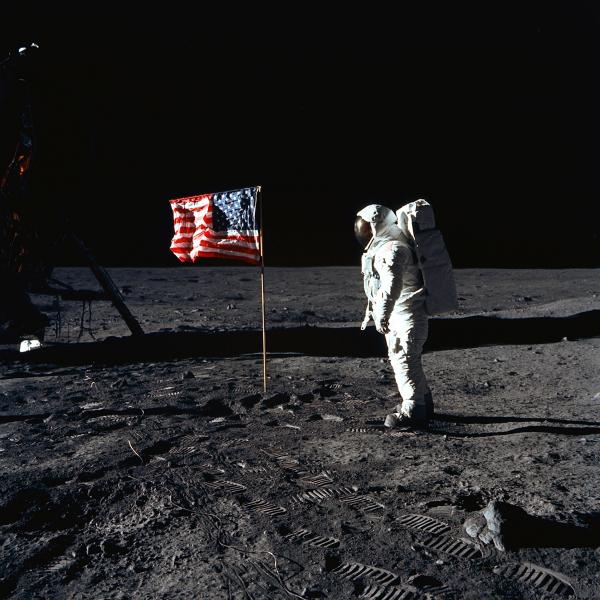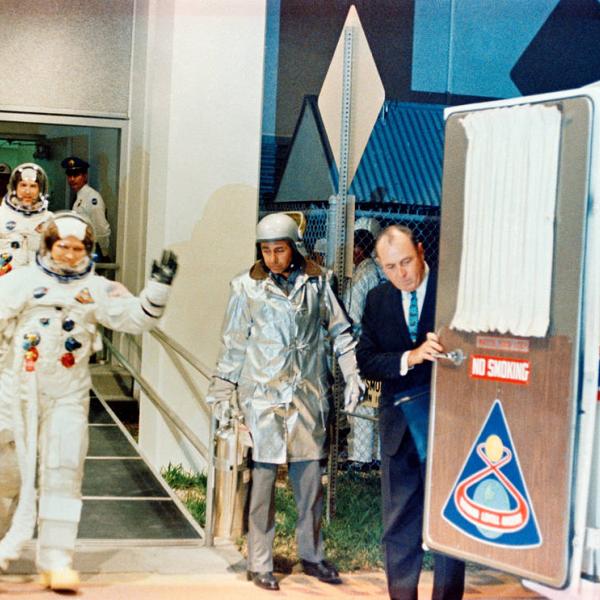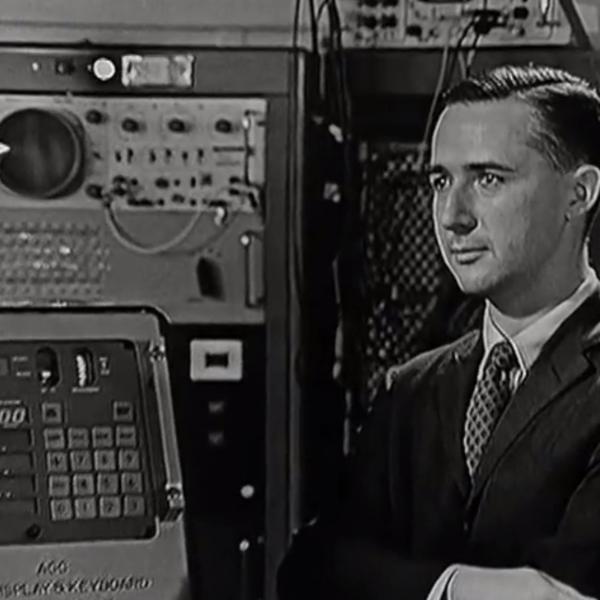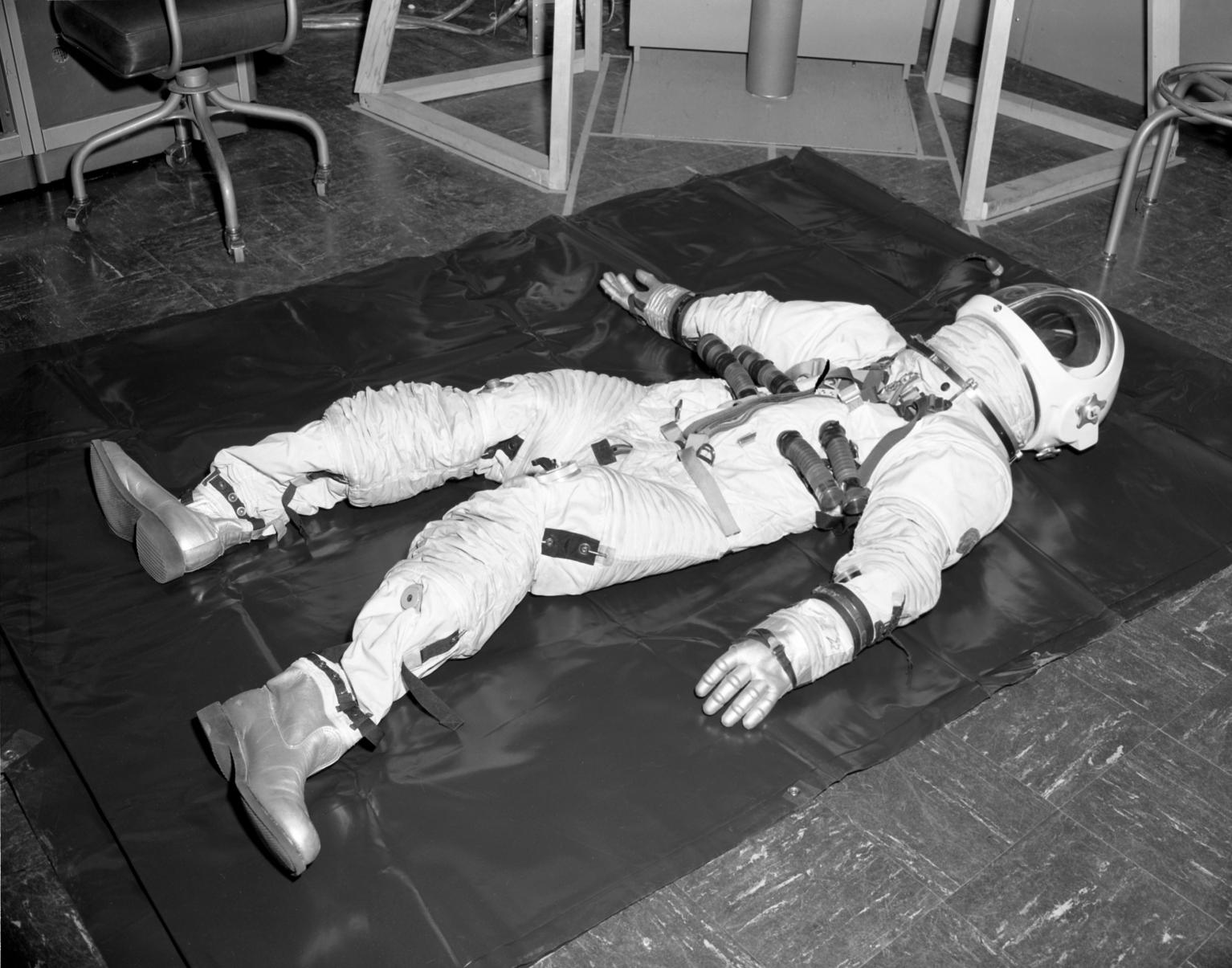
The Spacesuit You Need for a Moon Mission
How do you blow your nose in a space helmet?
NASA has run through dozens of models of space suits for its explorers over the years, but the custom-fit, marshmallow-like suits worn by astronauts Neil Armstrong and Buzz Aldrin during their moon landing in 1969 are arguably the most iconic—and, at the time, possibly the most technologically advanced outfits ever created.
The Extravehicular Mobility Units, the fancy name for space suits, engineered for the Apollo missions had to serve many purposes, the most important one obviously being to keep the astronauts safe outside the confines of their ship. On top of being impenetrable by things like jagged moon rocks or extreme space heat, the suits also had to be somewhat flexible to allow for things like bending over to grab samples or setting up data stations on the Moon. So to get the closest fit possible, each crew member had three suits—one for flight, one for training and one as a flight backup—custom-made to their measurements, including the suit’s gloves, which were created from molds of their hands.
The inner workings of the Apollo space suits were not unlike that of any other space vehicle. Weighing in at about 180 pounds (or 30 pounds in reduced gravity), the A7L model had 13 layers inside, many of which were designed just for heat protection. Since the surface of the moon could reach almost 200 degrees Fahrenheit, it’s bound to get a little toasty inside the suits. Air conditioning wasn't exactly an option, but the innermost layer touching the skin did work as a cooling agent, with cool water flowing through “spaghetti-like” tubing sewn into nylon. Five layers of aluminized Mylar (the shiny plastic film you see on helium balloons) and a layer of Kapton film provided further heat protection inside the suit, and several layers of non-flammable Teflon served as a barrier against scrapes and cuts.
If the custom suits were impressively designed, the Apollo helmet was a feat of genius. Within the “fishbowl” helmet we have all come to know and love is the “pressure bubble,” attached to the five-layer core pressure suit. The bubble had a feed port and duct attached to the back and, perhaps the coolest part nobody talks much about, a valsalva device that allowed the astronauts to blow their noses without using their hands when the pressure would plug up their ears. The fishbowl portion of the helmet included two visors, one with a thermal control coating and one with a gold optical coating, and two sunshields.
It took three years to develop the baseline for the Apollo 11 suit, the one Armstrong and Aldrin would wear for the first moon landing. NASA continued to improve on its suit after Apollo, even developing one with an armchair-like jetpack with controllers known as a manned maneuvering unit that could function away from its ship for astronaut Bruce McCandless’ groundbreaking untethered space walk in 1984. But what did the greatest authority on the original suit, spacewalker and spacesuit-wearer Armstrong, really think of his marshmallow-like confines in 1969?
“It was tough, reliable and almost cuddly,” he said.

